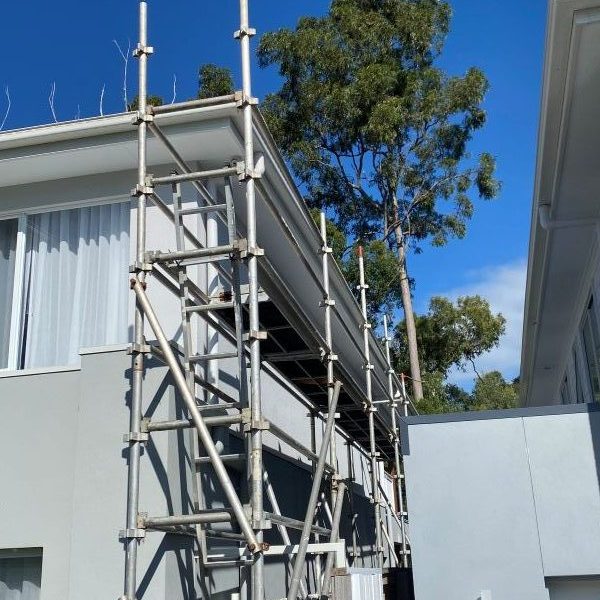Optimising Scaffold Load Capacity: Essential Insights for Safety and Compliance in the Construction Industry
The concept of scaffold load capacity is fundamental in the construction sector, as it determines the maximum weight that a scaffold can safely bear during various construction activities. This critical aspect encompasses three primary categories of loads that must be carefully evaluated:
- The weight of the scaffold itself (often referred to as the dead load)
- The weight of workers, tools, and materials placed on the scaffold (known as the live load)
- External forces such as wind, rain, or vibrations impacting the structure (classified as environmental load)
Grasping these load types is vital as they significantly affect the total stress on a scaffold throughout its operational lifecycle. Adhering to these calculations is not merely a recommendation; it is a legal obligation under Australian law designed to safeguard the well-being of all personnel involved in construction projects.

A Comprehensive Step-by-Step Guide to Utilising Our Scaffold Load and Height Calculator Effectively
While a universal formula is not applicable to every scaffold configuration, our scaffold calculator offers a user-friendly interface to obtain precise estimates by streamlining key variables. This tool is specifically designed for residential builders, homeowners, and scaffold hire professionals who adhere to the guidelines established by Australian OHS standards.
Step 1: Determine the Type of Work
Identify the specific nature of the work to be undertaken, which might include tasks such as roof restoration, exterior painting, solar panel installation, cladding, or rendering, each requiring different scaffold configurations.
Step 2: Specify the Number of Workers Involved
For instance, you may enter two workers who will be operating simultaneously on the scaffold platform, ensuring that the load calculations accommodate their combined weight.
Step 3: Estimate the Weight of Materials to Be Used
This could involve estimating around 120 kg worth of rendering materials or tools that will be necessary throughout the project's duration, factoring in the weight for precise load calculations.
Step 4: Input the Height of the Scaffold Platform
For example, the height might be established at 4.5 metres above ground level, ensuring that the scaffold is set up safely and in compliance with regulations.
Once you provide this information, the calculator will present a recommended scaffold configuration that includes:
- The appropriate duty class (e.g., Light, Medium, or Heavy)
- An estimation of the Safe Working Load (SWL) for each bay
- The recommended scaffold type (e.g., aluminium tower or steel frame)
- Essential safety features required (including guardrails, soleplates, and stabilisers)
- Any compliance triggers related to height (e.g., tie-offs needed for heights exceeding 4 metres)
Understanding the Absence of a Universal Load Formula for Scaffolding
<pAlthough the scaffold calculator serves as a valuable resource for making estimations, scaffolders and engineers do not depend solely on a singular formula due to several significant factors:
- Scaffold systems can vary tremendously based on materials and design (including aluminium, steel, modular, and tube-and-coupler)
- The intended usage has a major impact on the load capacity (for example, painting versus masonry)
- Different manufacturers offer varying platform strength and component ratings, which can lead to inconsistencies in load capacity
Standard Industry Method for Calculating Safe Working Load (SWL)
Professionals frequently reference the following formula as a foundational guideline for estimates:
Safe Working Load (SWL) per bay = (Platform Load Rating × Safety Factor) – Scaffold Component Weight
Example Breakdown:
- A platform rated for a maximum load of 600 kg
- Using a 4:1 safety margin: only utilising 25% of the rating yields 150 kg
- Subtracting the scaffold structure's weight, which is 100 kg
- The resulting usable working load is 50 kg (this is a conservative estimate and may not reflect actual planning)
Due to the complexities inherent in real-world conditions, professional scaffolders typically rely on manufacturer guidelines, engineering tables, and local regulations rather than depending solely on this simplified formula.

Best Practices Adopted by Professionals for Scaffold Evaluations
Professional scaffold evaluations generally encompass the following crucial components:
- Reviewing manufacturer load data and verified span ratings to ensure their accuracy
- Calculating the combined live, dead, and environmental loads to guarantee safety
- Ensuring compliance with AS/NZS duty class specifications to align with industry standards
- Securing engineering sign-off for any custom or elevated scaffold arrangements
- Conducting thorough visual and structural inspections before scaffold use to identify any potential hazards
Adapting Scaffold Practices to Environmental Conditions and Site-Specific Variables
Addressing Wind Exposure in Coastal Queensland
In areas classified under wind zones N3 and N4, the lateral forces impacting scaffolds are considerably increased. Consequently, scaffolds must be anchored at shorter intervals, and additional bracing or shade cloth may be necessary, particularly during high-wind seasons, to maintain stability.
Considerations for Soil and Ground Conditions
When faced with unstable or sloped soil, it is crucial to employ soleplates and adjustable base jacks to bolster scaffold stability. Moreover, sites with varying elevations may necessitate the use of levelled bay systems to ensure a safe working environment for all personnel.
Regulations Governing Work Above Four Metres
In Queensland, any platform exceeding four metres in height requires thorough inspection and certification. A scaffold handover certificate is mandated under the Work Health and Safety Regulation 2011, ensuring adherence to safety standards across the board.
Essential Safety Regulations for Compliance
- Work Health and Safety Regulation 2011 (QLD)
- Managing the Risk of Falls at Workplaces (Code of Practice, 2021)
- AS/NZS 1576 and AS/NZS 4576 Standards pertaining to scaffold safety
- High Risk Work Licence (HRWL) is mandatory for any scaffold installation above four metres
Site supervisors are tasked with performing regular inspections, particularly following adverse weather conditions or significant changes in scaffold height or load, ensuring ongoing compliance with safety regulations at all times.
Real-Life Case Study: Scaffold Application in Robina
In a recent project on the Gold Coast, a homeowner in Robina required scaffolding to repaint and render a two-storey exterior wall. The operational height for this task was established at five metres, with two tradespeople utilising approximately 200 kg of rendering materials and tools throughout the process.
By using our scaffold calculator, the recommended configuration was as follows:
- Scaffold class: Medium Duty, deemed appropriate for the task
- System type: Steel frame with timber planks to ensure durability
- Additional safety measures: Full edge protection, soleplates for soft earth conditions, and wind mesh to minimise exposure to wind
The scaffold successfully passed all necessary inspections and complied with Queensland’s OHS regulations, resulting in no downtime during the project's completion.
Key Considerations for Scaffold Height and Load Capacity Calculations
Determining scaffold height and load capacity should never be approached as mere guesswork. In residential projects, this meticulous process is essential for ensuring safety, effectively managing costs, and achieving compliance with local regulations.
Given the specific requirements applicable to Australian conditions, particularly in southeast Queensland, we strongly recommend obtaining an accurate scaffolding quote and ensuring that all installations are conducted by qualified professionals.
Reach Out to CanDo Scaffolding Hire for Expert Guidance and Services
For further information regarding our offerings, please do not hesitate to contact us at 1300 226 336 or send an email to theguys@cando.com.au at your convenience.
We provide a comprehensive range of scaffolding solutions, including void protection platforms and roof edge protection, customised to suit the requirements of any residential or light commercial construction project.
Understanding Scaffold Load Capacity for Residential Projects
The Article: Scaffold Load Capacity Insights for Residential Projects first appeared on https://writebuff.com
The Article Scaffold Load Capacity for Residential Construction Projects Was Found On https://limitsofstrategy.com

